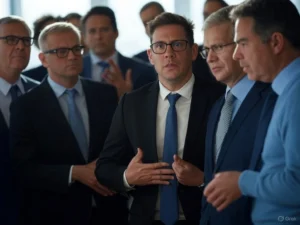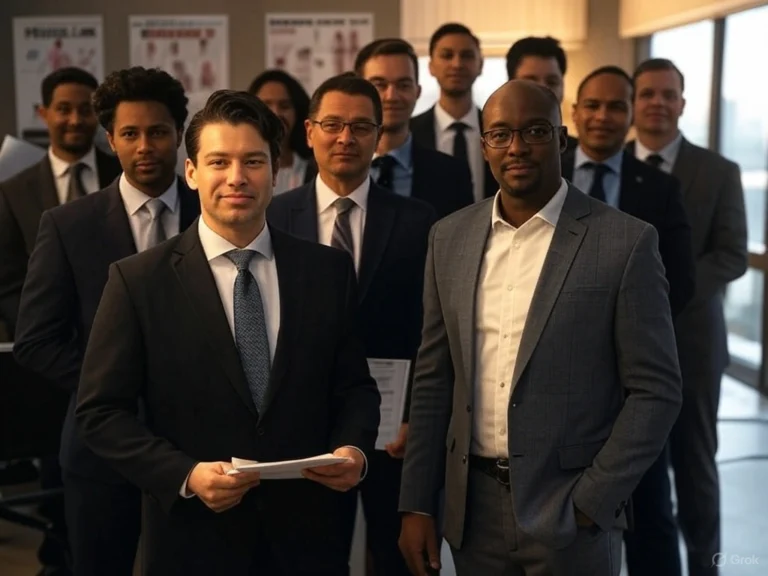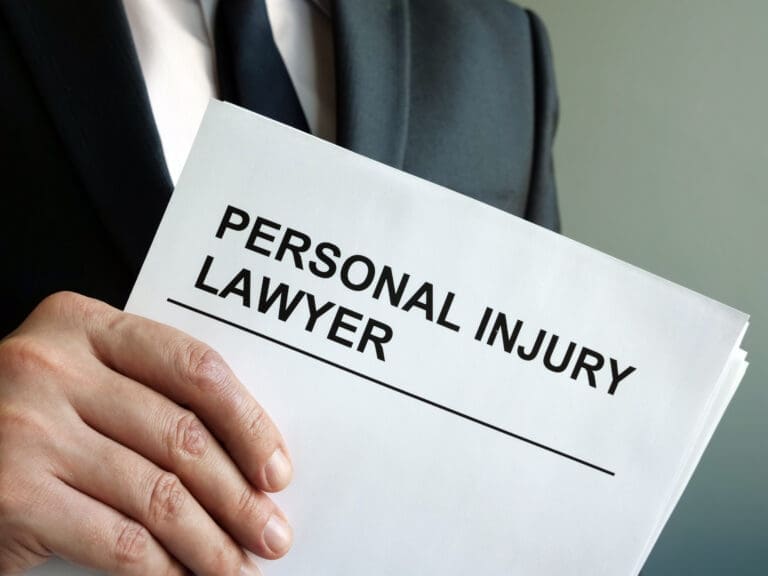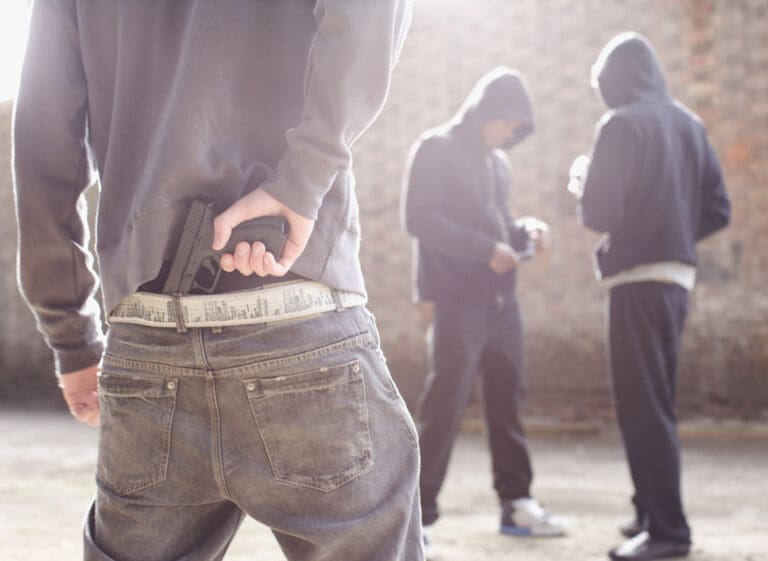
In the realm of criminal law, few charges are as complex and nuanced as criminal conspiracy. Unlike standalone crimes that require the completion of a specific act, conspiracy charges hinge upon the prosecution’s ability to establish that an agreement existed between two or more individuals to commit an unlawful act. This fundamental element—the agreement—forms the cornerstone of any conspiracy case and presents unique challenges for both prosecutors and defense attorneys.
The prosecution of conspiracy charges requires demonstrating beyond a reasonable doubt that defendants not only agreed to commit a crime but also took some affirmative step toward accomplishing their illegal objective. While seemingly straightforward, proving the existence of an agreement often involves piecing together circumstantial evidence, as conspirators rarely document their illicit plans in writing.
Para los que se enfrentan a criminal conspiracy allegations, understanding how prosecutors build and prove these cases is essential to mounting an effective defense. This knowledge becomes particularly crucial given that conspiracy charges can expose defendants to liability for crimes committed by co-conspirators, even if they personally took no part in the commission of those specific acts.
The Legal Foundation of Criminal Conspiracy
En el fondo, criminal conspiracy represents an agreement between two or more persons to commit a crime or to accomplish a legal act through illegal means. The crime of conspiracy is complete upon the formation of the agreement and, in most jurisdictions, the commission of at least one overt act in furtherance of the conspiracy.
The legal basis for most federal conspiracy prosecutions stems from 18 U.S. Code § 371, which establishes the general conspiracy statute. Under this provision, prosecutors must prove several key elements to secure a conviction. First, they must demonstrate the existence of an agreement between two or more individuals. Second, they must establish that the object of this agreement was unlawful—typically another federal crime. Third, they must prove the defendants’ knowledge of and intent to further the conspiracy. Finally, they must show that at least one conspirator committed an overt act to advance the conspiracy’s objectives.
The rationale behind criminalizing conspiracy lies in the recognition that group criminal activity poses a greater threat to society than individual wrongdoing. When multiple individuals combine their efforts toward an illegal end, they create a heightened danger that warrants separate punishment, even if their ultimate objective is never achieved.
Conspiracy charges also serve as a powerful tool for prosecutors, allowing them to cast a wider net in complex criminal cases. By charging conspiracy, prosecutors can potentially hold all participants accountable for the actions of any member of the conspiracy, provided those actions were reasonably foreseeable and in furtherance of the common plan.
Proving the Agreement: The Central Challenge
The agreement element represents the most critical and often most challenging aspect of proving a conspiracy case. Unlike many other crimes that leave physical evidence, the agreement in a conspiracy frequently exists only in the minds of the participants. Prosecutors rarely have the luxury of presenting a written contract or recorded conversation explicitly outlining the conspiratorial plan.
Instead, federal prosecutors typically rely on circumstantial evidence to establish the existence of an agreement. This evidence may include patterns of communication between alleged conspirators, coordinated activities, financial transactions, or other behavior that suggests a common plan. The law recognizes that direct evidence of an agreement is often unavailable and therefore permits juries to infer the existence of an agreement from the totality of circumstances.
Importantly, the agreement need not be formal or explicit. Courts have consistently held that a tacit understanding among the alleged conspirators is sufficient to satisfy this element. This means that prosecutors can establish an agreement through evidence of a “meeting of the minds” rather than requiring proof of an express verbal or written contract.
The Knowledge Requirement in Conspiracy Cases
For a defendant to be convicted of criminal conspiracy, prosecutors must prove not only that an agreement existed but also that the defendant knowingly and voluntarily participated in that agreement. This knowledge requirement serves as a crucial safeguard against convicting individuals who may have been unwittingly drawn into a criminal enterprise.
To satisfy this element, prosecutors must demonstrate that the defendant knew of the conspiracy’s unlawful objective and deliberately joined the agreement with the intent to further that objective. Mere association with conspirators or mere knowledge that a conspiracy exists is insufficient to establish guilt. The prosecution must show that the defendant actually agreed to participate in the criminal venture.
This knowledge element can be particularly challenging to prove in cases involving complex or multi-layered conspiracies. For instance, in white collar crime cases or large-scale drug crime operations, lower-level participants may claim they were unaware of the broader criminal scheme. Prosecutors must then present evidence showing the defendant’s awareness of the conspiracy’s true nature and willful participation in it.
Courts have recognized that direct evidence of a defendant’s knowledge is often unavailable, and thus circumstantial evidence may be used to establish this element. A defendant’s actions, statements, and role within the alleged conspiracy can all serve as indicators of knowledge and intent.
The Overt Act Requirement
In most conspiracy cases, prosecutors must prove that at least one of the conspirators committed an overt act in furtherance of the conspiracy. This requirement ensures that mere talk or planning does not rise to the level of criminal conspiracy without some step toward implementation.
The overt act need not be illegal in itself. It can be a perfectly legal action that advances the conspiracy’s objectives. For example, purchasing a legal item that will later be used in a crime, making a phone call to coordinate activities, or conducting surveillance of a potential target could all qualify as overt acts.
The purpose of the overt act requirement is to demonstrate that the conspiracy moved beyond the realm of mere thought or discussion into the world of action. It provides concrete evidence that the conspirators were serious about their criminal plans and took steps to bring them to fruition.
Importantly, the overt act need only be committed by one member of the conspiracy. Once an agreement is formed, all participants can be held liable for the overt acts of their co-conspirators, provided those acts were in furtherance of the common plan.
Circumstantial Evidence: The Prosecutor’s Toolkit
Given the inherent difficulties in proving an agreement directly, prosecutors rely heavily on circumstantial evidence to establish the existence of a criminal conspiracy. This approach requires building a case piece by piece, with each element of evidence contributing to the overall picture of conspiracy.
Common types of circumstantial evidence used in conspiracy prosecutions include:
Communication patterns: Frequent contact between alleged conspirators, especially around the time of key events, can suggest coordination and planning. Phone records, text messages, emails, and in-person meetings may all be scrutinized for evidence of conspiracy.
Coordinated actions: When multiple individuals act in a synchronized or complementary manner toward a common goal, this coordination may indicate a prior agreement. For example, if one person creates a distraction while another commits a theft, the coordination suggests planning and agreement.
Financial transactions: Money transfers, shared expenses, or unusual financial arrangements between alleged conspirators can provide evidence of their connection and common purpose. In drug crime o financial crime cases, following the money often reveals the conspiracy’s structure.
Specialized knowledge: When participants demonstrate awareness of details they would only know through involvement in the conspiracy, this knowledge can serve as evidence of their participation in the agreement.
Consistent narratives: When alleged conspirators tell similar but false stories to law enforcement, their coordinated deception may indicate a prior agreement to conceal their activities.
While each piece of circumstantial evidence might seem insignificant in isolation, the cumulative effect can be powerful. Prosecutors strive to present a coherent narrative that explains how the various pieces fit together to demonstrate the existence of an agreement beyond a reasonable doubt.
The Role of Co-Conspirator Statements
One particularly powerful tool in the prosecutor’s arsenal is the co-conspirator statement exception to the hearsay rule. Under this exception, statements made by one conspirator during and in furtherance of the conspiracy may be admitted as evidence against all co-conspirators, even if the declarant does not testify at trial.
This exception provides prosecutors with a significant advantage, as it allows them to introduce statements that would otherwise be excluded as hearsay. For example, if Conspirator A tells an undercover officer about Conspirator B’s role in the plan, that statement may be admissible against Conspirator B at trial.
For the co-conspirator statement exception to apply, prosecutors must establish by a preponderance of the evidence that: (1) a conspiracy existed; (2) the defendant and the declarant were members of the conspiracy; and (3) the statement was made during and in furtherance of the conspiracy.
This evidentiary rule recognizes that conspiracies often operate in secrecy, with participants communicating their plans only to each other. By allowing these statements to be used as evidence, the law acknowledges the practical difficulties in proving conspiracy cases while providing a mechanism to hold conspirators accountable for their collective actions.
The Pinkerton Doctrine: Expanded Liability
The scope of liability in conspiracy cases is significantly expanded by the Pinkerton doctrine, named after the Supreme Court case Pinkerton v. United States. Under this doctrine, a conspirator may be held criminally responsible for all reasonably foreseeable crimes committed by co-conspirators in furtherance of the conspiracy, even if the defendant did not directly participate in or even know about those specific acts.
This principle of vicarious liability dramatically increases the potential consequences of joining a conspiracy. For example, if three individuals conspire to rob a bank and one conspirator unexpectedly shoots a security guard during the robbery, all three conspirators could potentially face murder charges if the shooting was a reasonably foreseeable consequence of the armed robbery plan.
The Pinkerton doctrine reflects the law’s view that those who agree to commit crimes together assume the risk of additional crimes committed by their partners. By joining the conspiracy, each participant becomes an agent of the others for acts within the scope of the agreement.
This expanded liability underscores the serious nature of conspiracy charges and explains why prosecutors often favor conspiracy counts in complex criminal cases. By proving the existence of a conspiracy, prosecutors can potentially hold all participants accountable for the full range of criminal activity flowing from their agreement.
Defending Against Conspiracy Charges
Given the serious nature of conspiracy charges and the sometimes tenuous evidence used to establish them, effective defense strategies are essential. Several approaches may be employed by abogados penalistas to challenge conspiracy allegations.
Challenging the existence of an agreement represents the most fundamental defense strategy. Defense attorneys may argue that while the defendant may have associated with alleged conspirators, no actual agreement to commit a crime ever existed. This defense attacks the core element of conspiracy and, if successful, undermines the entire prosecution case.
Contesting knowledge and intent provides another avenue for defense. Even if an agreement existed among others, a defendant may argue that they did not knowingly join that agreement or did not share the intent to further its unlawful objective. This defense acknowledges the conspiracy but denies the defendant’s culpable participation in it.
Withdrawal from the conspiracy can serve as a defense in certain circumstances. If a defendant can prove that they completely and voluntarily withdrew from the conspiracy before the commission of the overt act, and communicated this withdrawal to their co-conspirators, they may avoid liability for subsequent acts.
Challenging the admissibility of evidence often plays a crucial role in conspiracy defenses. Given the heavy reliance on circumstantial evidence and co-conspirator statements, defense attorneys frequently file motions to suppress evidence obtained through questionable means or to exclude hearsay statements that do not properly qualify under the co-conspirator exception.
Statute of limitations defenses may apply in cases where the alleged conspiracy occurred in the distant past. The statute of limitations for conspiracy generally begins to run from the date of the last overt act in furtherance of the conspiracy.
The Burden of Proof in Conspiracy Cases
Despite the various tools available to prosecutors in conspiracy cases, they still bear the burden of proving each element of the offense beyond a reasonable doubt. This standard—the highest in our legal system—requires that the evidence leaves the jury firmly convinced of the defendant’s guilt.
The reasonable doubt standard serves as a critical safeguard against convictions based on mere suspicion or association. It requires prosecutors to present compelling evidence that the defendant actually agreed to participate in a criminal venture, not merely that the defendant knew people who were engaged in criminal activity.
In practice, meeting this burden in conspiracy cases often requires prosecutors to build a comprehensive case that connects multiple pieces of evidence into a coherent narrative. Juries must be convinced not only that a crime was planned but that the defendant knowingly and voluntarily joined in that plan.
The challenge for prosecutors lies in translating circumstantial evidence into proof beyond a reasonable doubt. While the law allows for conviction based on circumstantial evidence alone, juries may be hesitant to convict without some direct evidence linking the defendant to the conspiracy.
Types of Criminal Conspiracies
Criminal conspiracy charges span a wide range of underlying offenses, each with its own unique characteristics and challenges for prosecution. Understanding the different types of conspiracies provides context for how prosecutors approach proving the agreement element in various contexts.
Drug conspiracy cases represent one of the most common types of federal conspiracy prosecutions. These cases typically involve allegations of agreements to manufacture, distribute, or import controlled substances. In drug conspiracy cases, prosecutors often rely on evidence such as phone records, financial transactions, and the testimony of cooperating witnesses to establish the existence of an agreement. The quantity of drugs involved can significantly impact potential sentences.
White collar crime conspiracies include agreements to commit fraud, embezzlement, money laundering, or other financial crimes. These cases frequently involve complex paper trails, electronic communications, and financial records. Proving agreement in white collar cases often requires prosecutors to simplify complicated transactions and business relationships for juries while demonstrating the defendants’ knowledge of and participation in the fraudulent scheme.
Organized crime conspiracies target criminal enterprises engaged in various illegal activities. These prosecutions often utilize tools like the Racketeer Influenced and Corrupt Organizations (RICO) Act to address the ongoing nature of criminal organizations. Evidence of organizational structure, patterns of criminal activity, and relationships between members helps establish the existence of agreements within these groups.
Terrorism conspiracy cases involve alleged agreements to commit acts of terrorism or provide material support to terrorist organizations. These prosecutions face unique challenges in balancing national security concerns with defendants’ rights. Evidence often includes electronic surveillance, financial transactions, travel records, and sometimes undercover operations.
Public corruption conspiracies involve agreements between public officials and others to misuse official positions for personal gain. These cases may include evidence of bribes, kickbacks, or other improper benefits exchanged for official actions. Proving the agreement often involves demonstrating a quid pro quo relationship between the parties.
Each type of conspiracy presents distinct evidentiary challenges, but all require prosecutors to establish the fundamental element of agreement beyond a reasonable doubt.
Federal Versus State Conspiracy Laws
While the basic concept of conspiracy remains consistent across jurisdictions, important differences exist between federal and state conspiracy laws that affect how prosecutors prove the agreement element.
Federal conspiracy law, primarily codified in 18 U.S.C. § 371, generally requires proof of an agreement to commit a federal offense or to defraud the United States, knowledge and intent to join the conspiracy, and at least one overt act in furtherance of the conspiracy. Federal prosecutors benefit from nationwide jurisdiction, substantial investigative resources, and specialized expertise in complex conspiracy cases.
State conspiracy laws vary significantly across jurisdictions. Some states closely mirror the federal approach, while others have developed distinct requirements. For example, some states require proof that the conspiracy involved at least three participants, while others follow the federal model requiring only two. Similarly, some states impose more stringent requirements for the overt act element or have different approaches to co-conspirator liability.
These jurisdictional differences can significantly impact how prosecutors approach proving the agreement element. Federal prosecutors often have access to more extensive investigative tools, including wiretaps, surveillance, and nationwide subpoena power. State prosecutors, while more limited in some respects, may benefit from greater familiarity with local criminal networks and witnesses.
The choice between federal and state prosecution can have significant consequences for defendants as well. Federal conspiracy charges typically carry more severe potential penalties and are prosecuted by specialized attorneys with substantial resources. Understanding these jurisdictional differences is essential for both prosecutors building conspiracy cases and defendants mounting effective defenses.
The Role of Cooperating Witnesses
In many conspiracy cases, particularly those involving drug crimes o crimen organizado, prosecutors rely heavily on the testimony of cooperating witnesses—often former members of the conspiracy who agree to testify against their co-conspirators in exchange for leniency or other benefits.
These witnesses can provide powerful direct evidence of the conspiracy’s existence, structure, and operations. Having been insiders to the criminal agreement, they can testify about conversations, meetings, and activities that would otherwise remain hidden from law enforcement. Their testimony often provides the narrative framework that helps juries make sense of the circumstantial evidence presented by prosecutors.
However, cooperating witness testimony also presents significant challenges. Defense attorneys frequently attack such witnesses’ credibility, highlighting their own criminal conduct and the benefits they receive in exchange for their testimony. The potential for fabrication or exaggeration to secure more favorable treatment raises legitimate concerns about reliability.
Recognizing these vulnerabilities, experienced prosecutors typically seek corroboration for key aspects of cooperating witness testimony. This corroboration might come from surveillance evidence, phone records, financial documents, or the testimony of other witnesses. When multiple independent sources confirm the same information, the credibility of the cooperating witness is strengthened.
The use of cooperating witnesses illustrates the practical challenges in proving conspiracy agreements. While direct evidence from an insider can be compelling, juries must carefully evaluate the credibility of witnesses who may have strong incentives to testify in particular ways. This tension highlights the importance of corroboration and the need for prosecutors to build cases that do not rely exclusively on cooperating witness testimony.
Technological Evidence in Modern Conspiracy Cases
Advances in technology have dramatically changed how criminal conspiracies operate and, consequently, how prosecutors prove the existence of agreements. Digital evidence has become increasingly central to conspiracy prosecutions in the modern era.
Electronic communications—including emails, text messages, social media interactions, and messaging app conversations—often provide crucial evidence of coordination and agreement between alleged conspirators. Unlike traditional evidence that might be destroyed, digital communications frequently leave persistent traces that can be recovered even after attempts at deletion.
Cell phone location data can place conspirators together at critical times or track their movements to locations relevant to the conspiracy. This evidence helps prosecutors establish connections between individuals who might otherwise claim no relationship.
Financial records accessed through digital means, including bank transfers, cryptocurrency transactions, and online purchases, create paper trails that can reveal the financial relationships underpinning a conspiracy. Following these digital money trails often exposes the structure and operations of criminal organizations.
Social media activity frequently provides evidence of relationships, lifestyle changes, or statements relevant to alleged conspiracies. Posts showing sudden wealth, connections between defendants, or discussions of criminal activities can support prosecutors’ theories of an agreement.
While technological evidence offers powerful tools for proving conspiracy agreements, it also presents challenges. Issues of authentication, privacy concerns, and the sheer volume of digital data require prosecutors to carefully select and present the most relevant evidence. Defense attorneys, meanwhile, may challenge the collection methods, reliability, or interpretation of digital evidence.
As technology continues to evolve, both criminal conspiracies and the methods used to prove them will adapt accordingly. This ongoing technological arms race ensures that the strategies for establishing the agreement element in conspiracy cases will continue to develop in the coming years.
Sentencing Considerations in Conspiracy Cases
Las consecuencias de una conspiracy conviction can be severe and sometimes surprising to defendants unfamiliar with conspiracy law. Several factors influence sentencing in these cases and underscore the seriousness with which the legal system views conspiratorial conduct.
Under federal law, the maximum penalty for a general conspiracy conviction under 18 U.S.C. § 371 is five years’ imprisonment. However, if the object of the conspiracy is another crime with a higher maximum penalty, the conspiracy charge may carry that higher maximum instead. For example, conspiracy to commit a crime punishable by life imprisonment may itself be punishable by life imprisonment.
The Federal Sentencing Guidelines provide a structured approach to determining appropriate sentences for conspiracy convictions. These guidelines consider factors such as the defendant’s role in the conspiracy, the nature of the underlying offense, the defendant’s criminal history, and whether the defendant accepted responsibility through a guilty plea.
Particularly significant is the concept of “relevant conduct” under the guidelines. Defendants may be held accountable at sentencing for all reasonably foreseeable acts of co-conspirators in furtherance of the jointly undertaken criminal activity. This means that even a relatively minor participant in a large conspiracy may face substantial penalties based on the full scope of the conspiracy’s activities.
Cooperation with authorities can significantly impact sentencing in conspiracy cases. Defendants who provide substantial assistance in the investigation or prosecution of others may receive sentence reductions through “substantial assistance” departures under the guidelines or through statutory provisions that allow sentences below mandatory minimums.
These sentencing considerations highlight the serious consequences of conspiracy charges and the complex factors that influence punishment. They also explain why many conspiracy cases result in plea agreements, as defendants seek to limit their exposure to the potentially severe penalties associated with conspiracy convictions after trial.
Recent Trends in Conspiracy Prosecutions
El paisaje de conspiracy law continues to evolve, with several notable trends shaping how prosecutors approach proving the agreement element in contemporary cases.
Increasingly, prosecutors are utilizing conspiracy charges to address emerging forms of criminal activity, particularly in the cyber realm. Ciberdelincuencia conspiracies present unique challenges for proving agreement, as co-conspirators may never meet in person and may communicate only through encrypted channels or dark web forums. Prosecutors have adapted by developing specialized expertise in digital forensics and online investigation techniques.
Another significant trend involves the growing use of conspiracy charges in the context of white collar crime, particularly in cases involving corporate misconduct. These prosecutions often target agreements among corporate executives or between corporations and their clients to engage in fraud, price-fixing, or other illegal business practices. Proving agreement in these cases frequently requires analyzing complex business relationships and corporate decision-making processes.
The globalization of criminal activity has also influenced conspiracy prosecutions. International criminal conspiracies may involve participants across multiple countries, requiring coordination between law enforcement agencies worldwide. These cases present additional challenges in gathering evidence, securing witness testimony, and navigating different legal systems.
Courts continue to refine the legal standards for proving conspiracy agreements. Recent judicial decisions have addressed issues such as the use of social media evidence, the application of the co-conspirator hearsay exception to digital communications, and the boundaries of conspiracy liability in cases involving loosely affiliated participants.
These trends reflect the adaptability of conspiracy law to address evolving forms of criminal activity. As criminal methods change, prosecutors continue to develop new approaches to proving the essential agreement element that lies at the heart of every conspiracy case.
Conclusión
The prosecution of criminal conspiracy charges centers on proving the existence of an agreement—often an invisible, unwritten understanding between participants to engage in unlawful activity. This fundamental challenge shapes how cases are investigated, charged, and tried throughout the criminal justice system.
Prosecutors employ a range of strategies to establish this crucial element, from gathering circumstantial evidence and digital communications to securing the cooperation of insider witnesses. The law has evolved to recognize the practical difficulties in proving secret agreements, allowing for convictions based on reasonable inferences drawn from the totality of evidence.
For defendants, the expansive nature of conspiracy liability presents significant risks. The potential to be held accountable for the actions of co-conspirators, even without direct participation in those acts, makes conspiracy charges particularly serious. Effective defense strategies focus on challenging the existence of an agreement or the defendant’s knowing participation in it.
As criminal methods continue to evolve in response to technological and social changes, so too will the approaches used to prove conspiracy agreements. This ongoing adaptation ensures that conspiracy law remains a powerful and flexible tool for addressing coordinated criminal activity in its many forms.
Understanding how prosecutors prove agreement in conspiracy cases provides valuable insight into this complex area of criminal law—an area that balances the need to address the unique dangers posed by group criminal activity against the fundamental principle that guilt must be established beyond a reasonable doubt.
Citations:
- Proving Agreement for Conspiracy Charges
- Understanding Conspiracy Charges
- Federal Conspiracy Cases Overview
- CBS News Crime Reports
- Best Keywords for Criminal Defense
- Top Attorney Keywords for SEO
- Proving Criminal Conspiracy Charges
- Conspiracy Crime Laws and Consequences
- Criminal Defense Attorney Keyword Guide
- SEO Strategies for Criminal Defense Lawyers
- Understanding Criminal Conspiracy Basics
- Top PPC Keywords for Criminal Defense
- How Prosecutors Prove Conspiracy Crimes
- California Conspiracy Charge Insights
- Federal Conspiracy Charges Explained
- Prosecutor Requirements in Conspiracy Cases
- Criminal Conspiracy Law Overview
- What Constitutes a Conspiracy Charge
- Federal Conspiracy Laws in the US
- Proving Conspiracy in Federal Court
- Federal Criminal Conspiracy Defense
- Prosecuting Conspiracy in DC Courts
- Defense Strategies for Conspiracy Charges
- Federal Drug Conspiracy Charges
- NACDL on Conspiracy Law
- Criminalizing Community Policing Conspiracy
- Trends in Criminal Legal Reform 2024
- Oath Keepers Guilty of Seditious Conspiracy
- Criminal Law SEO Guide 2024
- Prosecution and Defense of Conspiracy Cases
- SEO for Criminal Defense Attorneys
- SEO Keywords for Detective Services
- CNN Crime and Justice News
- Tariffs and Enforcement Risks 2025
- AdWords Keywords for Criminal Defense
- Interesting Criminal Justice Research Topics
- Federal Conspiracy Law Audio Guide
- Sixth Circuit Pattern Jury Instructions
- Justice Department Conspiracy Case Guidelines
- YouTube Video on Conspiracy Charges








